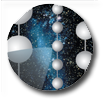» Introduction
» Monte Carlo sample
» Processing times

» Trigger level
» effective
area
» angular resol. vs energy
» efficiency
» energy spectra
» angular
resol. vs
declination
» events vs azimuth
» fakes
» summay table
» comparison 9,
21, 80 lines
» check retriggering

» Cut set 1
» effective area
» angular resol. vs energy
» efficiency
» energy spectra
» angular resol.
vs declination
» events vs azimuth
» fakes
» summay table
» comparison
9, 21, 80 lines
» check
retriggering

» Cut set 2
» effective area
» angular resol. vs energy
» efficiency
» energy spectra
» angular resol.
vs declination
» events vs azimuth
» fakes
» summay table
» comparison
9, 21, 80 lines
» check
retriggering

» Cut set 3
» effective area
» angular resol. vs energy
» efficiency
» energy spectra
» angular resol.
vs declination
» events vs azimuth
» fakes
» summay table
» comparison
9, 21, 80 lines
» check
retriggering

» Event
rates vs zenith cut
» corsika events
» cosmic signal
» atmospheric neutrinos

» Preliminary conclusions

Comments to:
zornoza@icecube.wisc.edu

|
Preliminary Conclusions
The analysis of these results is
still
going-on, but we can set some preliminary conclusions:
-
The best results overall correspond to linefit,
both when we compare the first guesses and the results from the
log-likelihood algorithm fed by any of the first guesses.
-
The processing time of linefit and dipole fit
are shorter (linefit is a bit faster) than in JAMS and DW, as expected.
Moreover, the time for each Cluster JAMS call is much longer (> x10
wrt direct walk).
-
Likelihood reconstructions take a factor 100
more time than linefit or dipole fit (but actually less than Cluster JAMS).
-
Efficiencies at trigger level are similar among
the first guesses (almost 100%), except for direct walk, which is 65%
(even less at low energies).
-
The best results with fake rates correspond to
direct walk, but the differences (0.99% vs 1.04% in linefit) is not
compensated by the differences in efficiency.
-
The tuning of jams and direct walk is still
on-going, which could improve thier performance.
-
In order to tune the data rate sent via
satellite, we are studing the effect of a cut in the zenith angle and
the threshold in the number of DOMs to trigger the detector. A maximum
rate of 160 kB/s of satellite bandwidth can be tranlated into ~16 ev/s
for a 8-DOM threshold. This would require a cut of 65 deg in the zenith
angle (maybe a bit larger, when the AMANDA data is taken into account).
This cut at 65 deg would keep ~95% of a E-2 cosmic signal.
-
For detailed comparisons among the strategies,
please, look at the plots!
|
|
|

